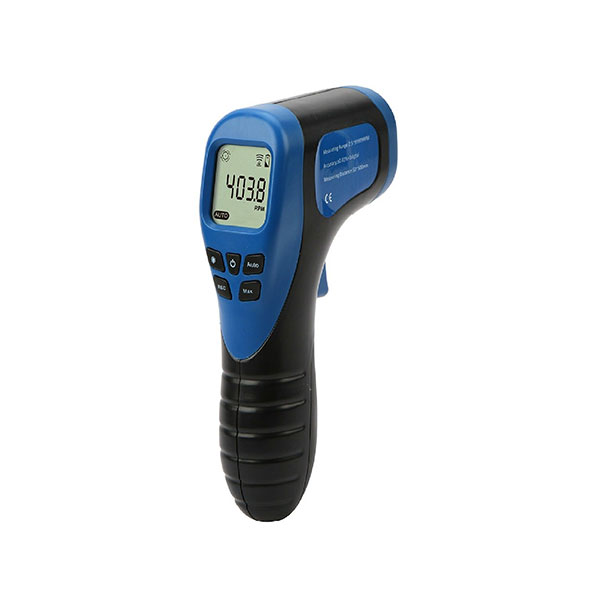The Significance of a Tachometer in Checking Engine Speed and Efficiency in Automotive Applications
In the realm of auto engineering, the tachometer stands as an essential instrument in the motorist's collection, offering a straight window into the inner operations of a car's engine. Past its feature as a simple scale of changes per minute (RPM), the tachometer acts as a crucial tool for fanatics and specialists alike, providing real-time understandings right into engine performance and health and wellness. Recognizing the significance of this gadget exceeds surface-level monitorings, delving into the complex partnership between engine speed, power outcome, and total driving experience. As we discover the complex role of the tachometer in automobile applications, a much deeper admiration for its effect on car dynamics and effectiveness begins to arise.
Relevance of Checking Engine RPM
Monitoring engine RPM, or changes per minute, is a critical facet of automobile upkeep and efficiency assessment. Engine RPM directly associates with the speed at which the engine's crankshaft revolves, suggesting just how swiftly the engine is running.
Additionally, keeping an eye on engine RPM is important for efficiency examination in auto racing and high-performance lorries. In summary, keeping an eye on engine RPM is not just vital for identifying concerns but likewise for enhancing engine efficiency in various automobile applications.

Benefits of Real-Time Data
In automobile applications, real-time information plays an important duty in offering immediate understandings into the efficiency and condition of the car. By continuously keeping track of various parameters such as engine rate, temperature level, fuel usage, and extra, real-time data supplies numerous advantages that contribute to improved performance and safety and security when driving.
Furthermore, real-time data assists in performance optimization by giving instant responses on driving routines and engine performance. Vehicle drivers can change their actions in real-time based on this info to attain much better gas economic climate and prolong the life expectancy of their vehicle.

Moreover, real-time information plays an important duty in modern automobile diagnostics, allowing technicians to promptly detect and deal with malfunctions. This results in lowered downtime, lower maintenance prices, and inevitably, enhanced total car reliability and long life (tachometer). By taking advantage of the power of real-time information, automotive stakeholders can make enlightened decisions that favorably influence both the efficiency and long life of the automobile
Effect On Gear Shifts
The tachometer plays a critical duty in maximizing equipment changes by supplying real-time engine browse around these guys rate data to the chauffeur. When approaching the redline on the tachometer, it signals the motorist to upshift to stop over-revving the engine and triggering prospective damage.
Furthermore, the tachometer aids in attaining smoother equipment shifts, especially in manual transmissions. By keeping track of engine speed, vehicle drivers can implement equipment shifts at the optimum RPM array, minimizing jerking motions and decreasing endure the transmission elements. This precision in equipment modifications not only boosts driving convenience but additionally adds to fuel performance.
Enhancing Fuel Efficiency
Offered the vital role the tachometer plays in maximizing equipment shifts for efficiency and engine health, it directly adds to making the most of gas investigate this site performance in vehicle applications. By offering real-time responses on engine rate, the tachometer aids chauffeurs in maintaining one of the most efficient RPM array for fuel economic situation. When chauffeurs consistently keep an eye on the tachometer and adjust their motoring habits appropriately, they can avoid unneeded fuel intake triggered by over-revving or hauling the engine.
In addition, the tachometer helps drivers identify the most fuel-efficient gear to be in at any type of given moment, avoiding the engine from working more challenging than needed. In verdict, the tachometer check offers as a beneficial device in boosting gas performance by advertising ideal driving routines and recognizing locations for enhancement in the lorry's efficiency.

Optimizing Engine Durability
The tachometer's function in keeping track of engine speed and performance is crucial in making certain the durability of automobile engines. By utilizing the tachometer effectively, vehicle drivers can maximize engine durability through conscious RPM administration. Regularly revving an engine too high can bring about extreme wear and tear on critical parts, such as the pistons, valves, and bearings. Over time, this can cause reduced engine performance and possible malfunctions. Monitoring the tachometer enables chauffeurs to remain within the suggested RPM range for their automobile, avoiding unnecessary pressure on the engine and prolonging its life expectancy.

Verdict
In final thought, the tachometer plays an essential duty in keeping track of engine rate and performance in auto applications. By supplying real-time data on RPM, it permits efficient equipment shifts, improved gas effectiveness, and made the most of engine long life. This tool is crucial for maintaining optimum engine performance and making sure the total performance of a lorry.